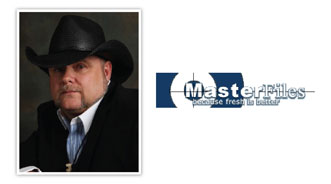Price: Profiling the Skip-Tracer

In all my teachings, I have consistently placed great importance on a skip-tracer’s understanding of human nature, and how it applies to the subject’s daily activities. Using this knowledge to profile the skip allows the subject to be placed in one of the three types of skips categories, which is a profiling-process that I have advocated for years.
The theory is that by better understanding the type of skip you are pursuing, you will know which direction to take your investigation without wasting time and resources — much like a great fisherman knows what bait to use for the catch of the day.
My travels have brought me into contact with an intriguing array of skip-tracers from varying walks of life and from a variety of industries. Each has a different definition of success —meaning that each has a different goal once the subject is located. Yet at the end of the day, each of us performs the same worthwhile task: Hunting people who do not want to be found.
What has been a revelation to me is that just as we have three types of skips, we also have three types of skip-tracers. The three profiles that I have created below define graduated levels of workmanship and the correlating increase in quality and success.
The first two examples illustrate different characters, yet they both pose varying degrees of liability to both themselves and their clients.
You may recognize yourself or your industry peers among these character profiles. Learn from them to better manage your own path to greater success.
The Intimidator
These tracers use a shotgun approach: calling everyone listed on a credit application, and anyone else that they have been able to link to the subject. They preemptively apply the full extent of pressure that that their knowledge of the creditor’s contract and other laws and regulations provides in order to ramp up the level of fear and pressure on anyone who knows the subject.
The initial display of noise and influence can be impressive and effective in the short term, but only if there is a great volume to work with. This approach is called skimming the cream.
When the supply of contacts has been exhausted, the tracer is left with nowhere else to turn. Meanwhile the thunderous yet short-lived approach has alerted the subject, providing him with enough warning and information to go deeper into hiding.
A further drawback to this approach is the greater chance of liability to the employer that is often associated with the increased risk of third-party disclosure.
The Secret Agent
These tracers have invested a great deal of time and money into every gadget and piece of technology available to help them gain an edge. The assortment of gear may include voice changers, pocket cams, trap lines and access to every database in existence. They have a great ability to sweet-talk anyone and have a pretext for any situation.
These tracers normally put more time and effort into their gadgets then is truly needed to complete the task at hand. It is only this writer’s opinion, but at times they focus too much attention on their tech savvy, and not enough on the human they are seeking.
In today’s litigious society there is little room for any pre-texting in our practices, so they walk a fine line with violating many of the laws on the books today at both the state and federal level.
The Cybertracker
Now this tracer occupies the very top branch of the evolution tree of the skip-tracer. He has obtained that hard-to-come-by old-school knowledge from years of experience in the field. He has a better grasp of the nuances: knowing when to ask, and what type of question to ask, and whom to ask.
More importantly he knows when to talk and when to just sit back and listen. He is adept in the science of human nature, mastering the knowledge of the inherent traits of all human beings to more easily locate his elusive prey.
The Cybertracker understands today’s technology and possesses an ability to handle greater volumes through batch-processing. The waterfall approach to skip tracing causes the more-challenging accounts to land on the more experienced skip-tracer’s hands. He welcomes the opportunity to take a more hand-to-hand-combat approach to the task, discerning what piece to the puzzle is missing and where it can be found. He knows the difference between real-time and compiled data, and when to use each and why.
He has also taken the time and great expense to become licensed, bonded, insured, and certified in his field. He has gained a working knowledge of all the state and federal regulations on skip-tracing and collections, such as the FDCPA, FCRA, GLB, Sunshine Act and so many others.
Cybertrackers pose little to no threat to their clients from a liability standpoint, as they have elevated this process we call skip-tracing beyond ignorance and inexperience, removing the risks commonly associated with those still getting by on outdated methods and unreliable practices. They are ready to tackle what lies ahead on our path, wherever it may lead in the coming months and years.
After 28 years I am still proud to say I am a skip-tracer, and I hope you are as well. It is the greatest show on earth, and Ringling Brothers and Barnum & Bailey Circus has nothing on us.
Alex Price is currently national sales and training manager with MasterFiles and has been a trainer to the American Recovery Association and former advisory board member to Time Finance Adjusters and the Society of Certified Recovery Agents. This article and more commentary can be found at SkipGuru.com. Price can be reached at (251) 366-6779 or alex.price@skipguru.com.


